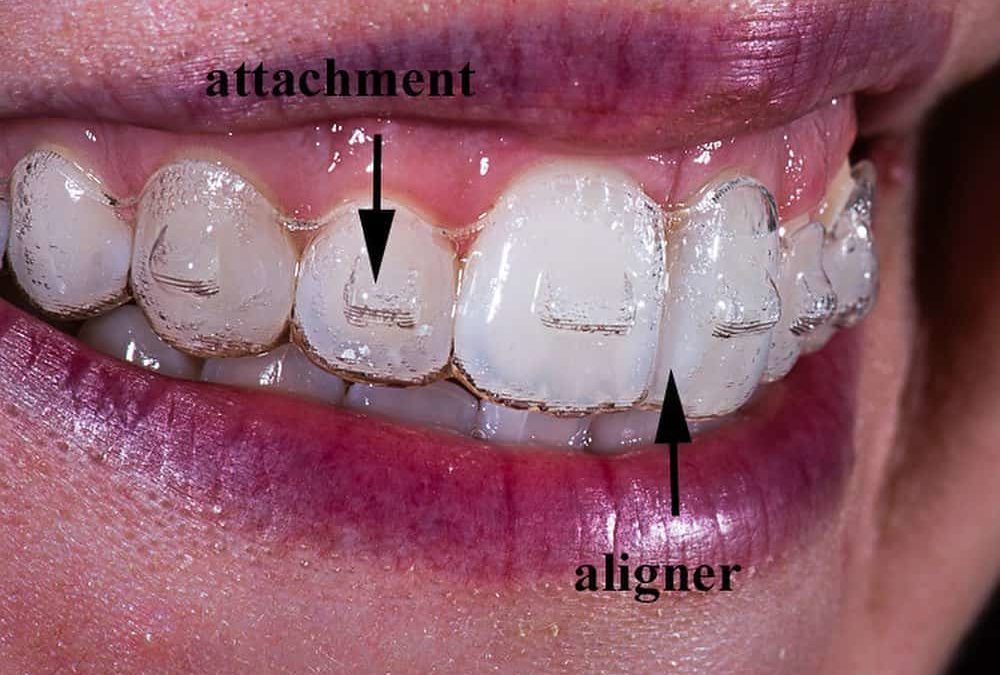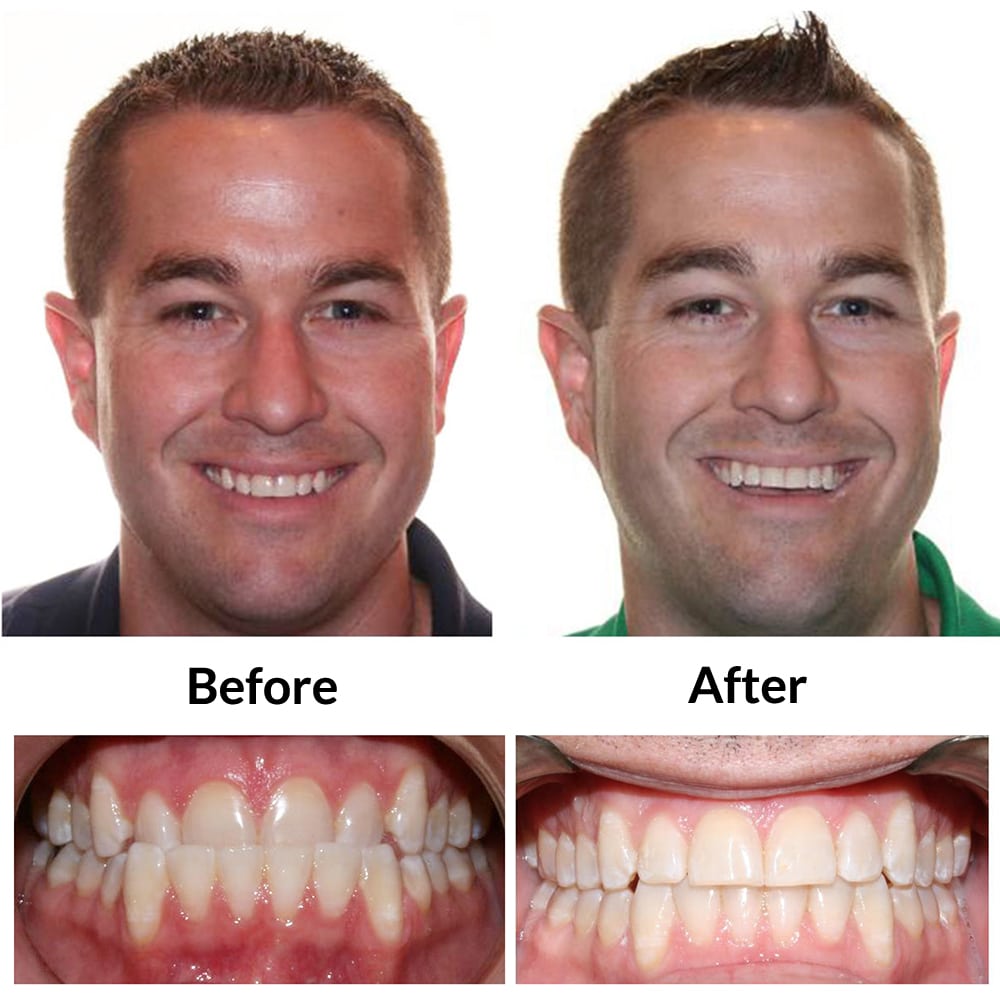The Ultimate Comparison: Invisalign vs. Traditional Dental braces for Adults
The Ultimate Comparison: Invisalign vs. Traditional Dental braces for Adults
Blog Article
Invisalign vs. Traditional Braces: Which Alternative Is Right for You?
When considering orthodontic therapy, the choice between Invisalign and standard dental braces presents several crucial factors that warrant careful examination. Invisalign uses a discreet option with removable aligners, while standard braces offer a more noticeable yet efficient service for severe imbalance.
Introduction of Treatment Alternatives

In comparison, typical braces are composed of steel braces and wires that are bound to the teeth. This approach applies continual pressure over time to achieve positioning. While reliable for complex orthodontic problems, traditional dental braces require regular gos to for changes and can present obstacles in maintaining dental hygiene because of the difficulty of cleansing around brackets and cords.
Both choices have their merits, and the option commonly depends upon particular dental problems, way of living choices, and individual conformity. Inevitably, speaking with an orthodontic professional is important for establishing the most appropriate therapy strategy customized to individual demands. Comprehending the nuances of each option can significantly influence the total success of orthodontic therapy.
Aesthetic Considerations
A significant factor influencing the selection in between Invisalign and traditional dental braces is the visual allure each therapy uses. Invisalign aligners are crafted from clear plastic, making them basically invisible when put on.
In contrast, typical dental braces consist of steel brackets and cords, which can be much more noticeable. While innovations in orthodontic modern technology have actually led to the growth of smaller braces and colored elastics, typical dental braces still maintain an even more noticeable account. For some people, the visibility of braces might deter them from looking for needed therapy.
Eventually, the option in between Invisalign and standard dental braces might rest on individual choices regarding aesthetics. Clients that focus on discernment usually lean toward Invisalign, while those that are less concerned about presence may opt for typical dental braces. Comprehending the aesthetic implications of each alternative is crucial for making a notified choice that lines up with one's way of life and choices.
Comfort and Convenience

In regards to convenience, Invisalign aligners are detachable, making it possible for individuals to enjoy their favorite foods without restriction and keep ideal oral hygiene. Cleaning and flossing are simplified, as the aligners can be taken out throughout these routines, whereas traditional braces need careful steering around wires and braces.
Additionally, Invisalign's progressive system enables fewer orthodontic check outs. Clients generally obtain several sets of aligners simultaneously, which can enhance the treatment procedure and minimize time spent in the orthodontist's chair. In comparison, standard braces necessitate regular adjustments, making them less convenient for those with busy schedules. Invisalign. Overall, the convenience and convenience of Invisalign make it an appealing choice for numerous individuals seeking orthodontic treatment.
Therapy Period and Efficiency
While both Invisalign and standard braces are reliable in remedying dental imbalances, the duration of treatment can differ dramatically in between the two options. Generally, Invisalign therapy can take anywhere from 12 to 18 months, relying on the intricacy of the situation. The clear aligners work by gradually shifting teeth right into their preferred placements, and routine follow-ups with an orthodontist aid ensure development remains on track.
In comparison, traditional dental braces often require a their website longer dedication, generally ranging from 18 months to 3 years. This is because of their fixed nature and the use of brackets and cables, which can be more effective for complex cases and severe misalignments (Invisalign). The therapy performance of conventional braces is well-documented, as they permit specific adjustments and greater control over tooth movement
Inevitably, the choice between Invisalign and traditional braces may depend upon both the expected treatment period and the details dental issues available. Consulting with an orthodontist is critical, as they can give customized recommendations based on private needs, ensuring the picked method straightens with wanted timeframes and end results.
Price Comparison and Insurance Coverage Options
Cost plays a substantial duty in the decision-making process for individuals thinking about orthodontic treatment, whether choosing Invisalign or traditional dental braces. Typically, the expense of Invisalign varieties from $3,000 to $8,000, while standard dental braces normally cost between $2,000 and $6,000. Factors influencing these prices include the complexity of the instance, the period of therapy, and geographical location.
Numerous oral insurance coverage strategies supply partial insurance coverage for orthodontic therapies, but the specifics can differ extensively. Generally, conventional dental braces might be extra frequently covered by insurance policy strategies compared you could try these out to Invisalign, which some insurance firms categorize as a cosmetic treatment.
Additionally, numerous orthodontic methods offer adaptable payment strategies, making both therapy choices a lot more obtainable. People need to ask about potential funding options and price cuts for ahead of time settlements. Examining the overall cost, including insurance coverage advantages and repayment plans, is necessary for making a notified choice that straightens with both aesthetic choices and budget considerations.

Final Thought
In recap, the option between Invisalign and standard dental braces pivots on numerous variables, including aesthetic preferences, comfort, therapy period, and cost. Invisalign provides a very discreet, detachable alternative that helps with dental hygiene and dietary flexibility, while conventional dental braces may be preferable for complex dental problems and often come at a lower cost factor. Eventually, assessment with an orthodontist is necessary to analyze individual conditions and identify one of the most proper therapy option for accomplishing optimum oral alignment.
When considering orthodontic treatment, the selection between Invisalign and typical dental braces presents a number of important variables that warrant careful evaluation.Comparing Invisalign and traditional dental braces reveals unique treatment alternatives for orthodontic correction.While both Invisalign and conventional dental braces are reliable in fixing oral imbalances, the period of treatment can vary considerably in between the two choices.Expense plays a considerable role in the decision-making procedure for people thinking about orthodontic treatment, whether deciding for Invisalign or standard dental braces.In click to read more recap, the option between Invisalign and typical dental braces pivots on several factors, consisting of aesthetic preferences, convenience, therapy period, and cost.
Report this page